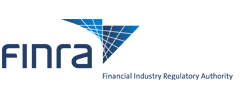
FINRA, SEC Warn Retail Investors About Investing in Leveraged or Inverse ETFs
Washington, DC — The Financial Industry Regulatory Authority (FINRA) and the Securities and Exchange Commission (SEC) have issued an Investor Alert called Leveraged and Inverse ETFs: Specialized Products with Extra Risks for Buy-and-Hold Investors warning retail investors of the risks associated with investing in these highly complex financial products. This Investor Alert follows a recent FINRA Regulatory Notice reminding securities firms and brokers of their sales practice obligations relating to leveraged and inverse exchange-traded funds (ETFs).
Traditional ETFs are designed to track an index, such as the S&P 500, or the price of an individual asset. Leveraged ETFs seek to deliver multiples of the performance of the index or benchmark (such as commodities or currencies) they track. Inverse ETFs (also called "short" funds) seek to deliver the opposite of the performance of the index or benchmark they track and are often marketed as a way for investors to profit from, or at least hedge their exposure to, downward moving markets. Both leveraged and inverse ETFs pursue a range of investment strategies through the use of swaps, futures contracts and other derivative instruments.
"Not all ETFs are created equal," said John Gannon, FINRA Senior Vice President for Investor Education. "Over time, leveraged and inverse ETFs can deviate substantially from the performance of the underlying benchmark, particularly in volatile periods. They are highly complex financial instruments that can turn into a minefield for buy-and-hold investors."
Most leveraged and inverse ETFs "reset" daily. This means that they are designed to achieve their stated objectives on a daily basis. Their performance over longer periods of time — over weeks, months or years — can differ significantly from the performance (or inverse of the performance) of their underlying index or benchmark during the same period of time. This effect can be magnified in volatile markets. For example, between December 1, 2008, and April 30, 2009, a leveraged ETF seeking to deliver three times the daily return of the Russell 1000 Financial Services Index fell 53 percent, while the underlying index actually gained approximately 8 percent. A leveraged inverse ETF seeking to deliver three times the inverse of the Russell 1000 Financial Services Index's daily return declined by 90 percent over the same period.
The SEC and FINRA are advising investors to consider leveraged and inverse ETFs only if they are confident the product can help meet their investment objectives and they are knowledgeable about and comfortable with the risks associated with these specialized ETFs. Because these products are complex and can be confusing, investors should consider seeking the advice of an investment professional who understands these products, can explain whether or how they fit with the individual investor's objectives, and who is willing to monitor the specialized ETF's performance for his or her customers.
Leveraged and Inverse ETFs also includes a list of questions investors should ask to better understand the risks of investing in these financial products.
Leveraged and Inverse ETFs is available on the SEC's Web site.
FINRA, the Financial Industry Regulatory Authority, is the largest independent regulator for all securities firms doing business in the United States. FINRA is dedicated to investor protection and market integrity through comprehensive regulation. FINRA touches virtually every aspect of the securities business — from registering and educating all industry participants to examining securities firms; writing and enforcing rules and the federal securities laws; informing and educating the investing public; providing trade reporting and other industry utilities; and administering the largest dispute resolution forum for investors and firms. For more information, please visit our Web site at www.finra.org.
